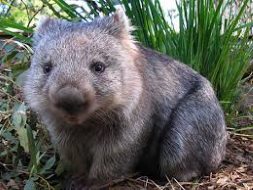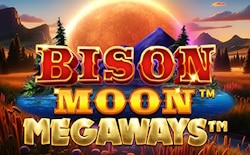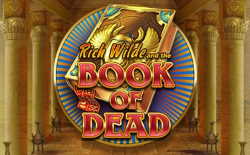Wombats

Wombats are short-legged, four legged mammals that are are found in Australia. You find them in all sorts of habitats in the Australian continent and Tasmania.
Wombats dig networks of burrows- a job made easier thanks to their sharp front teeth and powerful claws. One unique thing about wombats is their backwards pouch. The great thing about this is that the pouch protects their young when thay are digging, the wombat does not spray soil over its young who are nestled in the pouch.
You are most likely to bump into a wombat at the end of the day and during the night- but they do also head out into the open during the day, particularly on cooler days. They are pretty easy to track as they leave cubic droppings (square poo!)
Wombats love to eat grass, herbs, bark, and roots. Their sharp incisors are just the job for gnawing through this kind of vegetation and like many other herbivors, they have a space between their incisors and the cheek teeth.
Females wombats give birth to a single joey in the spring, after a gestation period of around 3 weeks. The joeys are in the backwards facing pouch for another 6 to 7 months. They are fully weaned after 15 months and becaome sexually mature after a year and a half.
And did you know what a group of wombats is called? Well, it’s called a wisdom!
Speed Merchants
Although wombats generally move around slowly to preserve energy, they can reach speeds of 40km/h (25 mph) if they are frightened or need to take evasive action. Their main predators are dingos and Tasmanian devils. Their main survival strategy is to dart down a tunnel, but they are pretty thick skinned too- it’s not that easy to bite into one. They can also give you a hefty kick and once down in one of their burrows, the odds change in their favour if they are fighting off an attacker.
Types of Wombats
There are 3 species of wombat that all have protected status under Australian law.
- Common wombat (Vombatus ursinus)
- Northern hairy-nosed wombat or yaminon (Lasiorhinus krefftii). These are endangered.
- Southern hairy-nosed wombat (Lasiorhinus latifrons)
If you are interested in helping to save the Northern hairy-nosed wombat, please consider donating to The Wombat Foundation which works tirelessly to help grow wombats’ populations to a level where they can be taken off the endangered.

 Bison Moon Megaways
Bison Moon Megaways  9 Pots Of Gold
9 Pots Of Gold  Book of Dead
Book of Dead  Starburst Slot
Starburst Slot  Thunderstruck 2
Thunderstruck 2